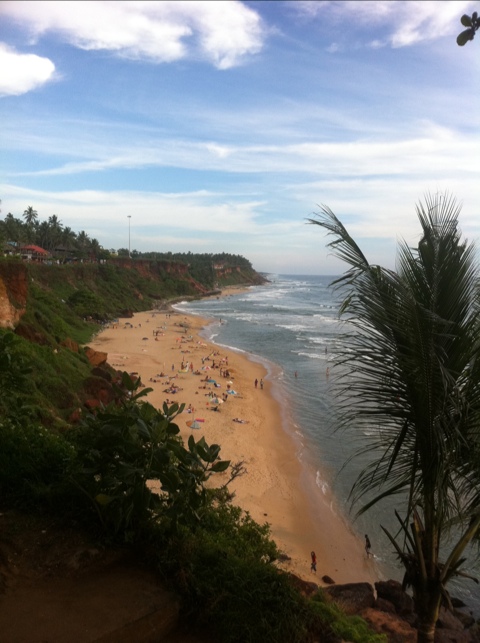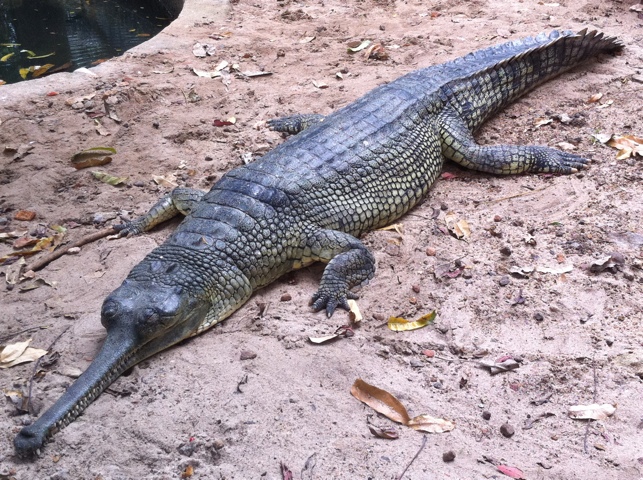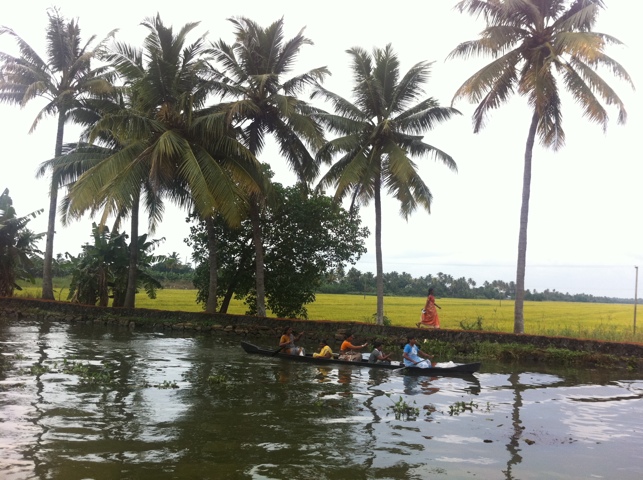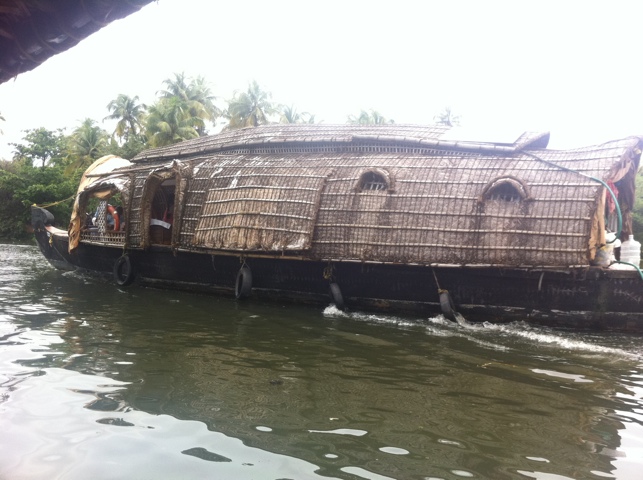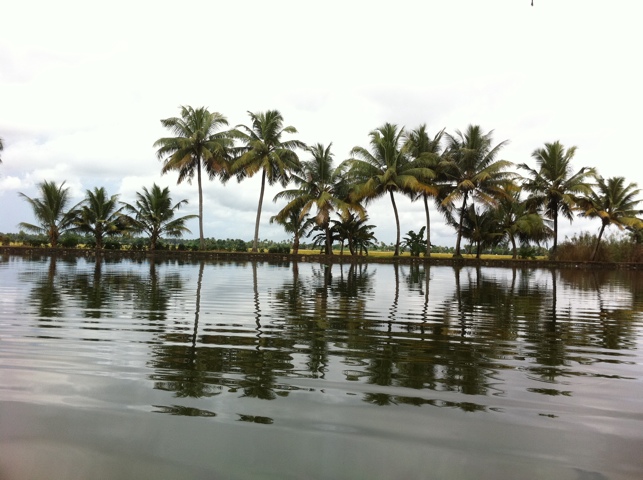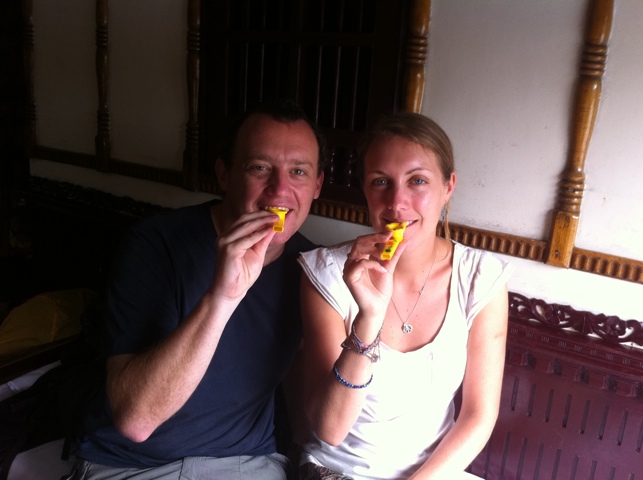Our journey on from Alleppey took us to the beach at Varkala, a stretch of sand between bright red cliffs and the gorgeous translucent blue of the ocean. As we bounced through the network of back streets to our guesthouse, we wondered if perhaps we’d somehow got the address wrong. We were staying in South Cliff, described as being a bit quieter than the tourist hotspot of North Cliff, but I don’t think we’d quite realised that the place would be nearly deserted, and the popular cafe that was recommended closed – it not being high season. It was certainly peaceful though, with a great cliff-top perch.
Varkala’s really a town of two halves, with the main urban centre a few miles from the tourist-dominated beach. The inhabitants of the two only really seem to meet when arriving and departing – in the more conventional sense through the bus or train station, but also more spiritually at the beach, as the waters are considered holy to Hindus. Many have their ashes scattered after cremation in the waves at the south end of the water, away from the multitudes of white westerners in the next cove further north worshipping a different kind of God – the sun. As we ate breakfast one morning at a beachside cafe alongside the fishermen counting out their catch, we were able to watch the ritual of a mourning family dressed mainly in white, with a few men taking an urn to the water in a final farewell. It was strange to have this happen amid the bustle of restaurant touts trying to attract trade, and rickshaws jostling to pick up a ride – but then this close interplay of religion and everyday life is very typical of the India we’ve seen. Less pleasant was the juxtaposition between the mourners fully clothed in white and the stream of white tourists trickling past in beach wear, something we were told was an absolute no at an Indian holy site. I was surprised at quite how tolerant the locals were, particularly as we were some distance from the western enclave of North Cliff, and this was after all part of a funeral.
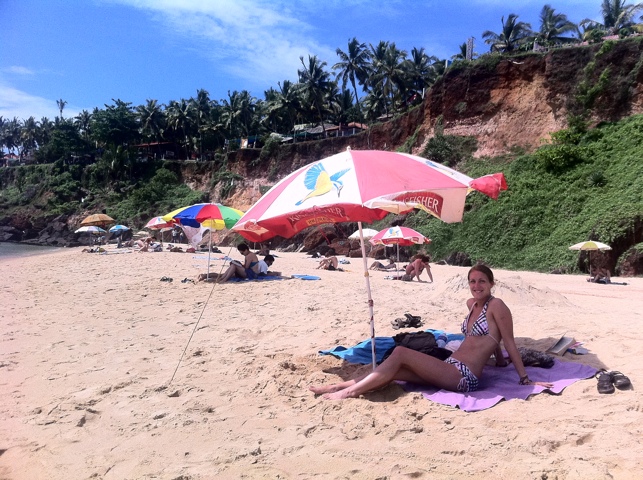
We spent a couple of days enjoying the sun and sea of the northern beach, Laura progressively building on the bronze tan she started in Spain, and me just going straight for the traditional lobster look. Amid tasty meals of seafood, we had a great snack of a whole fresh pineapple on the beach, cut and sliced by the woman in the air in front of us, a great bite of refreshment – and entertainment!
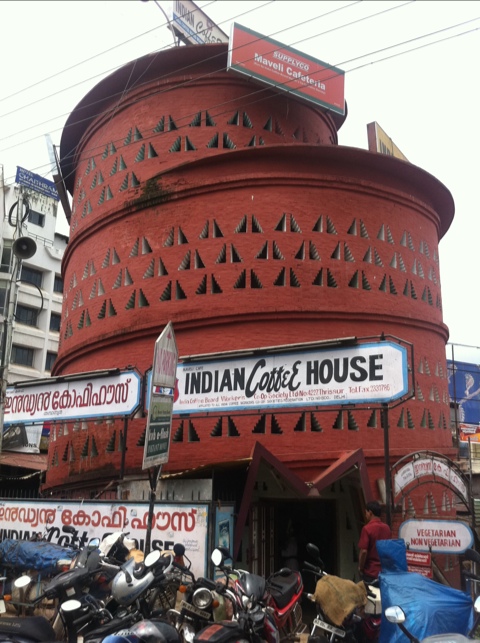
Trivandrum is the capital of Kerala, and was our next home for a couple of days, as well as the southernmost point of our trip round India, about 40 miles from the tip of the subcontinent. More importantly for us, it was a chance to try some true South Indian food – the masala dosas that Laura’s written about – as well as a brief retreat to our first western delights in weeks, in the form of pizza and pasta from a fantastic Italian restaurant in a middle class suburb. We also got to stop for a quick bite to eat at the memorably Indian Coffee House near the bus station (pictured above) – designed by a British architect living locally, with the interior one huge spiral.
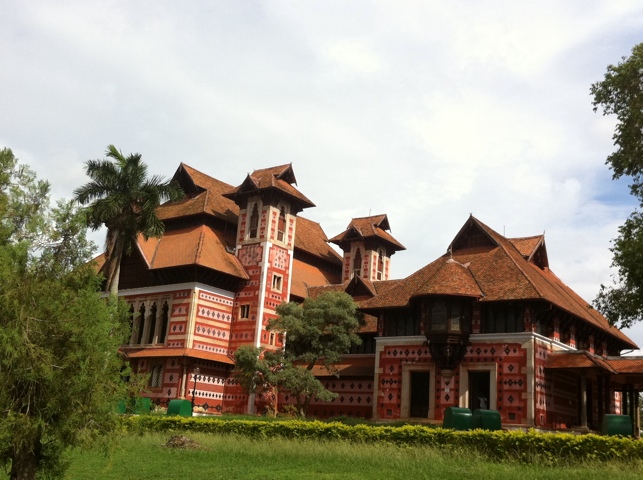
The city itself is a mix of the bustling and modern alongside some lovely green spaces and the gleaming white Secretariat building, home to the state government. A lot of the architecture in the town is typically Keralan, with wooden structures and red roofs. A highlight was the magnificent Napier Museum, a real splurge at 10Rs (15p) for the two of us. Set in a leafy green park, its interior is a world of colour, with candy stripes in yellow, blue and pink on the walls and a high wooden ceiling – not quite as garish and horrible as that sounds! The museum showcases some amazingly detailed carving, including ivory so thin it’s translucent – and a set of ornate concentric spheres that had us marvelling at how they’d been created.
In the same parkland as the museum is the city Zoo, an unexpected success. We’ve avoided zoos so far because seeing animals in cramped cages with barely enough room to turn around is not really our thing. Fortunately, this zoo was supported by WWF (the environmental group, not the wrestlers, which would be entertaining but odd) – and so the animals were generally in large open enclosures, free to run around. Having said that, the big cats were all in cages while we were there, but we’re assured this was a temporary measure – there was a huge space nearby without any animals in. Anyway, ethics sated, we saw tigers and leopards, lions and hippos, as well as spotted deer, elephants and zebras, and alligators. Actually it was the first time we’d seen almost all of the above in India – and we can now tell you that the roar of a lion is a scary thing!
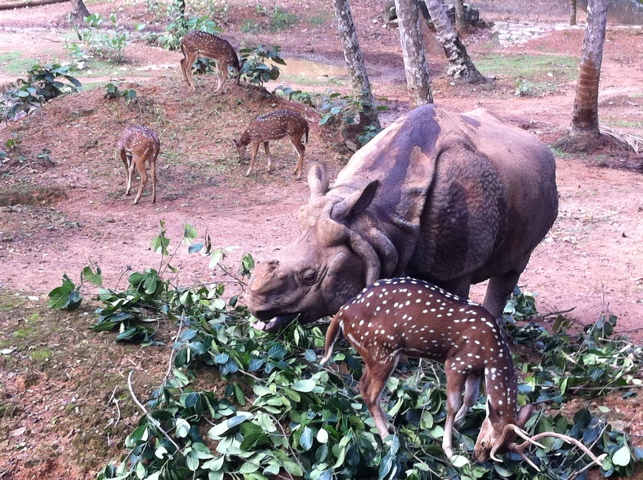
As a final bit of capital tourism, we popped in to the Puthe Maliga Palace, its exterior roof supports forming a line of fantastically carved wooden horses. There were also thrones on display – one made from some 35 ivory tusks (now those are elephants to be pitied), and another entirely in crystal. These were unfortunately not for us, and so we instead made our way onto the seats we’ve become accustomed to, on the train heading back north, and to our final destination in India.
Simon

